| |
One would never imagine that just on the outskirts of the glamourous city of Las Vegas, Nevada, there lies an ancient, mysterious world where the forces of nature have transformed, moulded and painted a vast and spectacular landscape.
The Mojave Desert
The Mojave Desert is the smallest of four deserts which make up the greater North American Desert (the others being the Great Basin Desert, the Chihuahuan Desert and the Sonoran Desert). At roughly 48’000 square miles this desert spreads across parts of California, Nevada, Arizona and Utah.
The elevation varies between 2'000 - 5'000 feet. The highest point is Mount Charleston/Charleston Peak reaching 11'916 feet. Death Valley on the other hand, sits at an elevation of 282 feet below sea level and is not only the lowest and hottest point in the Mojave Desert, but the entire North American continent as well (it can reach above 50° C).
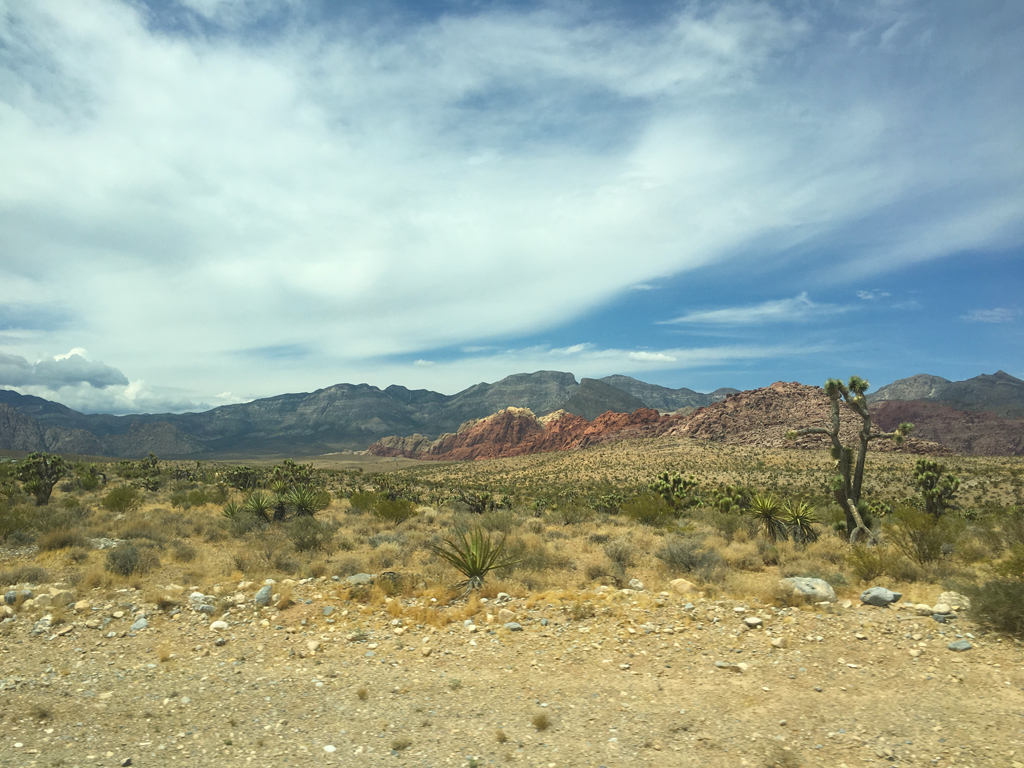
Further research into the Mojave Desert's climate indicates that due to the surrounding mountain ranges, it is a rain shadow desert (i.e.- when an area is dry and arid due to the surrounding mountain ranges obstructing wind blowing and rain falling into the area) and displays what is known as "hot desert climate" and "xeric conditions" where there is very low precipitation (rainfall and snowfall) and the temperatures vary and are extreme.
The Mojave Desert is also home to several wildlife species such as tortoises, lizards, snakes, bighorn sheep, boar, scorpions, cougars, burrows, wild horses and coyotes to name a few. On the topic of wildlife, interestingly enough it is reported that tracks and fossils of dinosaurs, as well as other species wildlife have been discovered in this desert.
Although we did not see much wildlife on our short tour (with the exception of a few squirrels and a hare), closer exploration of and further research into the rich, natural history of this arid region reveals that this desert breathes a life of its own.
Some of the highlights of our desert tour included:
The formation of the Mojave Desert, and a bit about Red Rock Canyon National Conservation Area and Keystone Thrust Fault
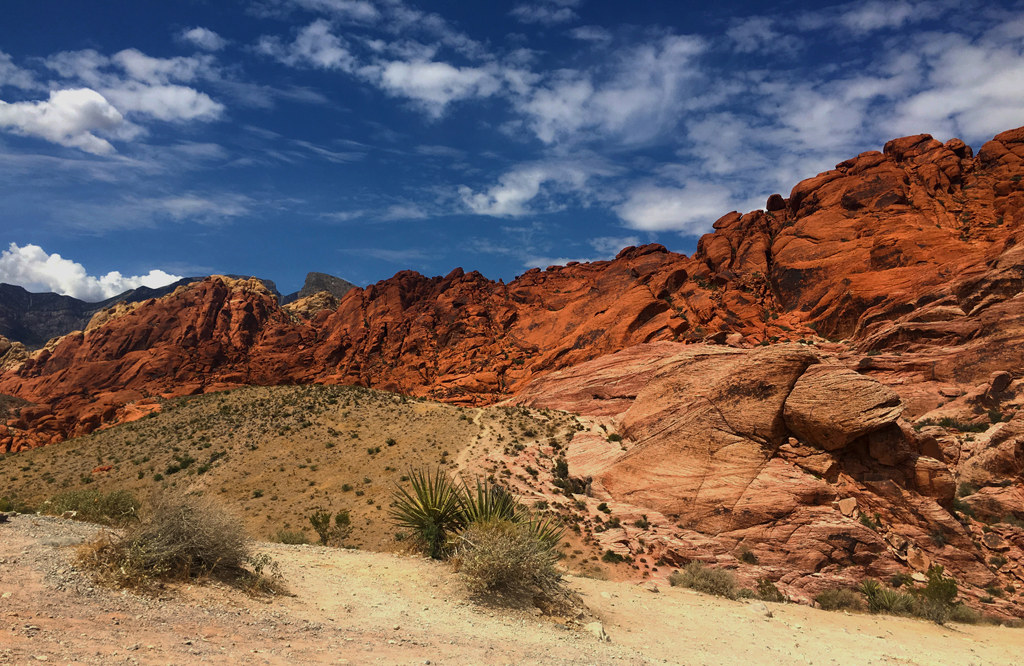
The Mojave Desert holds many prehistoric and geological wonders – two of them being Red Rock Canyon National Conservation Area and Keystone Thrust Fault
The natural development of this area and the Mojave Desert as we know it, began during the Palaeozoic Era about 500-600 million years ago. The vast area was drastically different than the arid desert we see now, as in that Era, it was part of an ocean basin.
Over time, the skeletal and shell deposits from the marine life and organisms lithified (the process of sediment forming into rock), to create limestone. It is reported that these accumulated deposits were over 9'000 feet thick.
During the Mesozoic Era (225 million years ago), due to the shifting of tectonic plates, the ocean bed was forced upwards. This additionally caused the deposition of shales (a type of rock formed out of mud, clay and other deposits and minerals) and sandstone. Over time, as the ocean water dispersed salt and gypsum (a mineral made up of calcium sulphate) were also deposited.
|
|
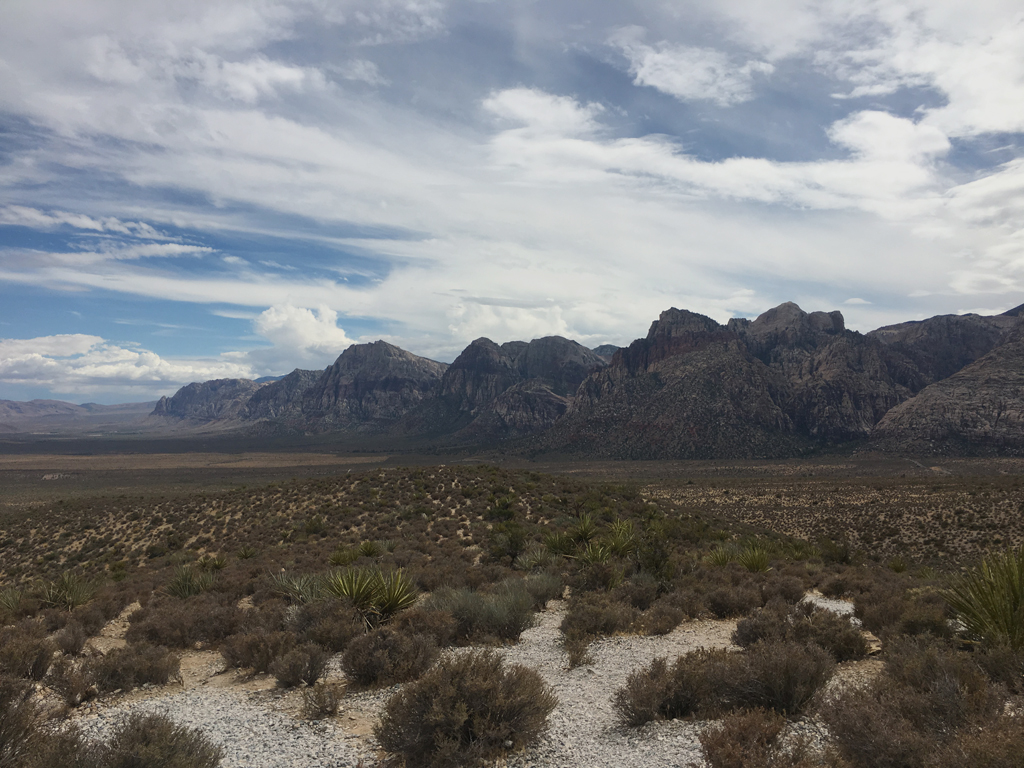
Rock formations, such as red Rock Canyon are said to have taken place during the Jurassic period (about 180-190 million years ago), when the area had completely transformed into a dry desert land. Furthermore, "shifting" sand dune ranges had been created.
Eventually the sand dunes lithified with other minerals and formed what is known as Aztec sandstone. The oxidization or “rusting” of the iron minerals in the rock, gives the Aztec sandstone its flaming red colour.
However, the transformation of the area did not end there, as 114-124 million years after (60-65 million years ago in the Cenozoic Era), North America had undergone a “mountain building” period known as Laramide orogeny. The shifting tectonic plates forced the older limestone rock (grey in colour) on top of the newer or younger sandstone rock (red in colour), leading to the multi-coloured landscape and additionally, the formation Keystone Thrust Fault (a rupture in the earth’s crust) which is especially visible from Red Rock Canyon. It is also a part of a fault zone which runs throughout the western part of the USA and even parts of western Canada.
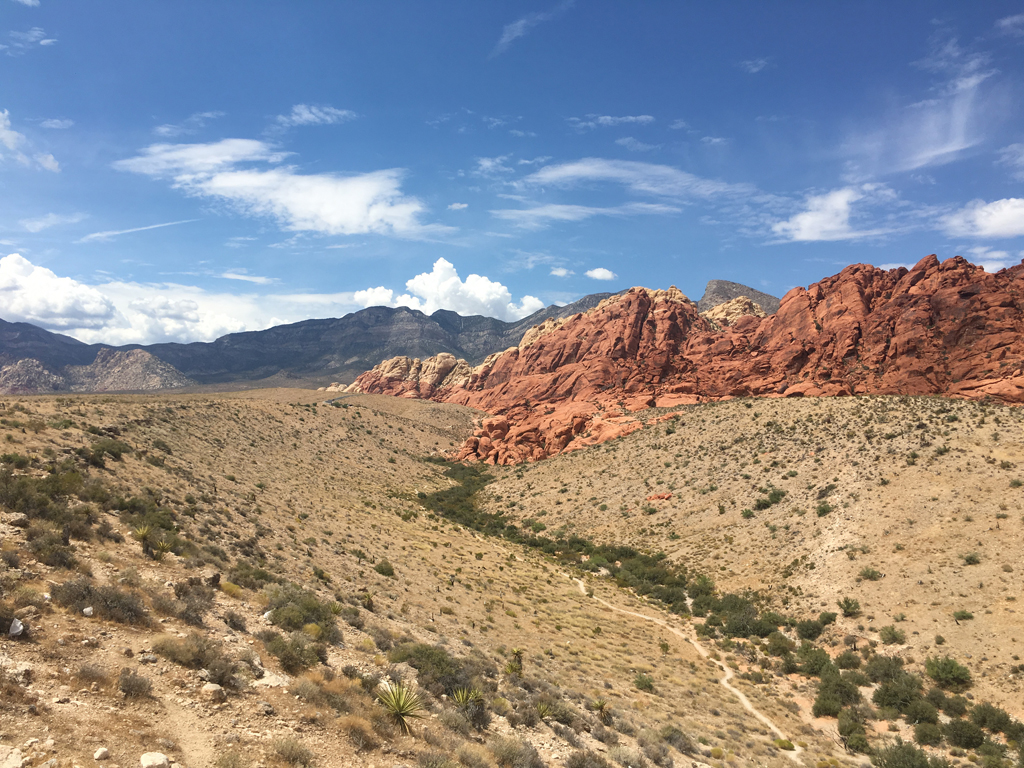
When standing in the stillness of Red Rock Canyon NCA one can truly feel the presence of Nature. The ancient, geological formations are majestic and remarkable and it has proven that Nature is a force (and artist) to be reckoned with.
Vegetation
As our tour of this dessert was during one of the hottest time of the year, it was surprising to see an abundance of healthy plant life. However, research indicates that the Mojave Desert is home to 1'750 - 2'000 species of plants.
Some of the plants which we saw included: the Joshua Tree (which only grows in the Mojave Desert), wild rice, desert holly, sage and desert agave.
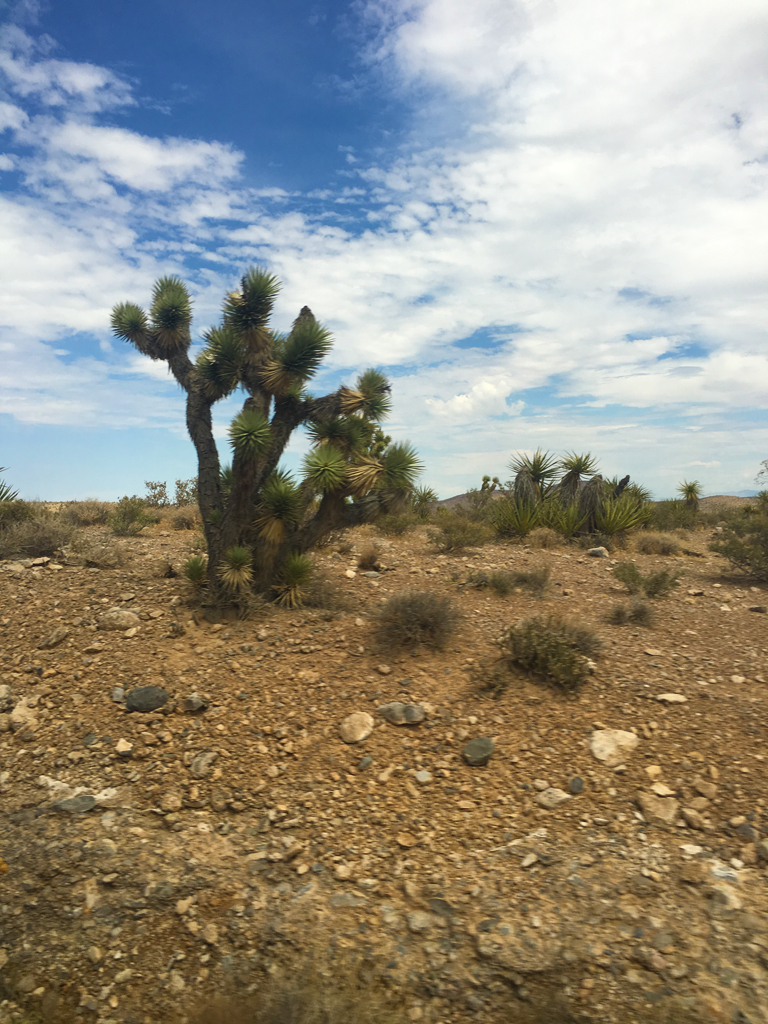
It is interesting to note that the Native Americans who settled in this region had extensive knowledge of the wide variety of plant life and their properties. They used plants for various purposes, such as for consumption, medicinal and ceremonial purposes, making drinks, weaving textiles and so on.
The Creosote Bush
The plant which especially piqued my interest was the Creosote Bush and had it not been highlighted during our tour, it would have gone unnoticed.
Our guide instructed us to smell the leaves of the plant which emitted a faint, but |
|
pungent scent. He further instructed us to blow air on to the plant. A strange request, but nonetheless when we did the plant's fragrance became intensely stronger. It was released as the plant absorbed the water from our breath.
How to beat the heat
Research indicates that desert plants have had to "adapt" to their environment and develop methods to survive the extreme climatic conditions.
Xerophytes, are plants which have had to adapt to dry, arid conditions (such as those plants found in the Mojave Desert). In such climates, water and moisture are scarce and the intense heat causes rapid evaporation. During the very dry months when the heat is extreme and water is lacking, various types of plants use the following main adaptation methods:
Succulents: plants such as cacti and aloes have been described as "fleshy" and are able to retain water in their leaves and stems.
Phreatophytes: these plants have the ability to grow roots (known as tap roots) which are long enough to absorb moisture close to, if not at the water table.
Perennials and Annuals: in the very dry months the seeds of these plants remain "dormant" (when they are still ungerminated). When enough water or moisture is present, within a short space of time these plants grow quickly enough to disburse their seeds. Perennial plants usually have a life span of about two years, while annuals, as the name suggests, usually survive for about a year.
There are many other adaptation methods which plants adopt. Additionally, some plants have more than one adaptation method or develop others to help with the retention of water and basically keep cool and hydrated in the scorching heat. For example, the waxy coating (known as the "cuticle") on some plant leaves prevents water vapour from escaping (known as transpiration). Some plants grow hairs in order to "reflect" the sunlight, while others may grow shady flowers or leaves. Regular plant activities, such as photosynthesis and transpiration, may also be adjusted in order to conserve water.
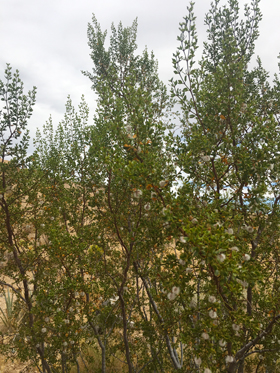
Plant life in the desert also develop defence mechanisms. For example, the thorns and spikes on some of the water-rich plants protects the plants from being attacked by thirsty predators, while other plants emit deterrent, pungent scents.
Although the above is a brief and limited synopsis of how plants survive the desert, in my research I found that while some plants have similar adaptation and defence mechanisms, each plant is also unique and complex in its own way.
Plants are still, silent and easy to bypass as part of the landscape. However, their complex structures, survival mechanisms and capabilities cannot be overlooked or even underestimated.
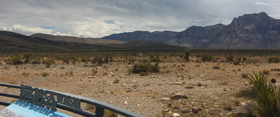
If rocks could speak...
When learning about the Mojave Desert it became more and more apparent that it was truly a fantastic opportunity and privilege to have experienced and stood on this natural, ancient, geological phenomenon. |
|